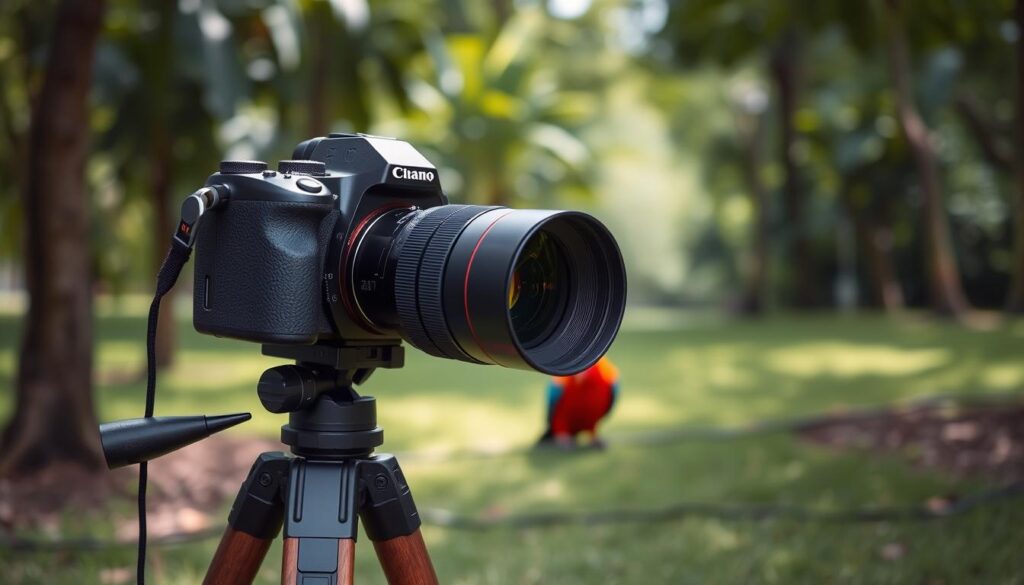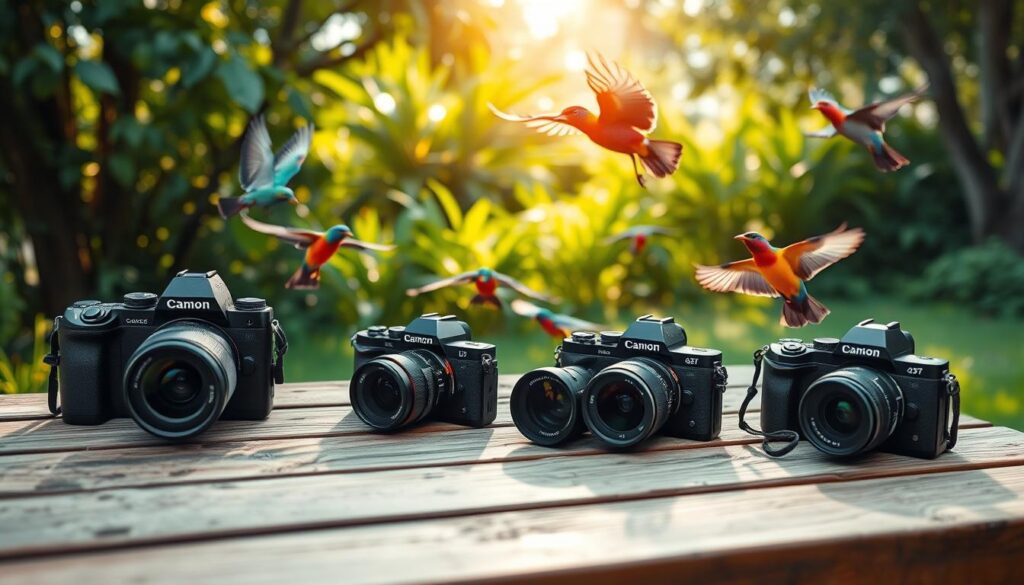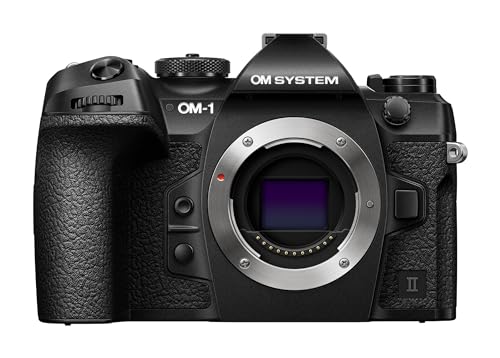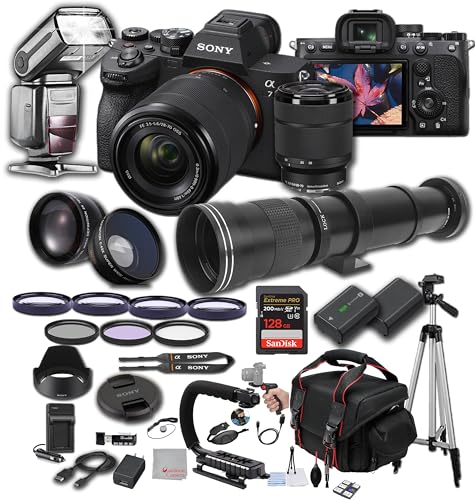Ever wondered why some photographers get amazing bird shots while others don’t? It’s often about their camera choice. The best mirrorless camera for bird photography has key features like fast autofocus and high burst rates. These are crucial for capturing birds in flight.
In this guide, we’ll look at the top mirrorless cameras for bird photography. We’ll see how new tech can improve our bird photography.
Key Takeaways
- Mirrorless cameras excel in bird photography due to their fast and accurate autofocus systems.
- Camera models like the OM System OM-1 are designed specifically with features ideal for capturing birds in motion.
- Entry-level options like the Canon EOS R10 offer impressive performance without breaking the bank.
- Pioneering burst shooting capabilities allow us to seize fleeting moments in stunning detail.
- Weather sealing and durability are crucial for outdoor photography, ensuring we can shoot in various conditions.
Understanding Bird Photography
Bird photography is a part of wildlife photography. It needs special skills and knowledge to capture birds in their natural homes. Understanding lighting, composition, and bird behavior is key. Each detail is important for stunning photos that show birds as they really are.
Techniques for bird photography are crucial because of the challenges we face. Birds can be hard to predict, moving fast or changing direction quickly. This is why patience and quick reflexes are essential. Using the right wildlife photography techniques can greatly improve our chances of getting that perfect shot.
Choosing the right camera for bird photography is important. The camera’s weight, how it feels, and the lenses it can use are key for long shoots. Also, features like autofocus speed and accuracy are vital, especially for photos of birds in flight.
Recently, there’s been a move towards using zoom lenses over prime lenses. This change is due to better technology that offers more flexibility at a lower cost. Features like bird-eye tracking make it easier to focus on our subjects accurately.
While new camera features can help, mastering wildlife photography techniques is still crucial. It’s what makes bird photography truly extraordinary.
Why Choose a Mirrorless Camera for Birding?
Switching to mirrorless cameras for birding offers many benefits. They are smaller and lighter, making them easy to carry on long trips. This is great for those who travel a lot.
Mirrorless cameras perform well for birding. They have better image stabilization and auto-focus. This means they can take great photos, just like DSLRs. Plus, they are smaller and lighter, which is less tiring to use.
Cameras like the micro four thirds by Olympus and Panasonic are very portable. They have small and light lenses. The “Pre-Burst Mode” helps capture fast-moving birds easily. The Panasonic Lumix G9 is a favorite for bird photography because of its versatility.
However, mirrorless cameras have some downsides. They use more battery power because of their electronic viewfinder and LCD screens. But, their auto-focus is often very accurate. This makes them a good choice for bird photography.
Key Features to Consider in Bird Photography Cameras
Choosing the right camera for bird photography is key. We need to look at fast autofocus, high burst rates, and durability. These features are crucial for capturing stunning bird photos.
Fast Autofocus Systems
Fast autofocus is a must for bird photography cameras. It lets us track birds quickly and accurately. Cameras like the Sony Alpha Series are great for this, helping us catch every moment.
High Burst Shooting Rates
High burst rates are vital for bird photography. They let us take many photos fast, increasing our chances of a great shot. Cameras like the Canon D90 and Nikon D500 are perfect for this.
Weather Sealing and Durability
Bird photography often happens outdoors, so durability is important. Weather-resistant cameras protect our gear from rain and dust. Cameras like the Nikon Z6 II are great for shooting in any weather.
| Camera Model | MP | Frames Per Second | Weather Resistant |
|---|---|---|---|
| Canon D90 | 32 | 10 | Yes |
| Nikon Z6 II | 24 | 14 | Yes |
| Sony Alpha Series | 20+ | Up to 10 | Yes |
| Canon EOS R7 | 30 | 15 | Yes |
Best Mirrorless Camera for Bird Photography
Choosing the right mirrorless camera for bird photography is key. The Nikon Z8 is a top pick, thanks to its advanced features. These features make bird photography better.
The Nikon Z8 has a 45.7 MP stacked CMOS sensor. This means it captures amazing details, even in tough light. Its 493-point hybrid autofocus system covers 90% of the frame. This keeps our bird photos sharp and in focus, even when birds move fast.
The camera can shoot up to 20 fps in RAW. This lets us catch fast bird movements without missing a shot. For high-resolution JPEGs, it shoots at 30 fps. And it can even hit 120 fps in low-resolution JPEG. This makes the Nikon Z8 perfect for bird photography.
For videographers, the Nikon Z8 records 8K video up to 60p and 4K video up to 120p. This lets us capture bird interactions in stunning detail. It also has a 5-axis in-body stabilization system for up to 6 stops of compensation. This is great for handheld shooting in the field.
Our tests show the Nikon Z8 performs well, especially in autofocus. We consider lighting and bird behavior to get the best shots. Photography Life’s review highlights the importance of autofocus and Drive scores in finding the best camera for bird photography.
| Feature | Description |
|---|---|
| Sensor | 45.7 MP stacked CMOS |
| Autofocus | 493-point hybrid AF system |
| Shooting Speed | 20 fps in RAW, 30 fps JPEG, 120 fps lo-res JPEG |
| Video Capability | 8K video @ 60p, 4K video @ 120p |
| Stabilization | 5-axis in-body stabilization |
The Nikon Z8 is a top choice for bird photography. Its advanced technology makes it stand out. Investing in such cameras is an opportunity for serious bird photographers.
Top Mirrorless Cameras for Bird Photography
Choosing the right mirrorless camera is key for bird photography. We’ve picked the best cameras for this hobby. They include the OM System OM-1, Canon EOS R10, and Sony A7 IV. Each camera has special features for different photographers.
OM System OM-1: The Comprehensive Choice
The OM System OM-1 has a 20-megapixel Micro Four Thirds sensor. It takes great photos and processes them fast. It can shoot at 120 fps with the electronic shutter.
It also has bird detection, making it easy for all levels of photographers. It’s under $2,200, offering great features at a good price.
Canon EOS R10: Ideal for Beginners
The Canon EOS R10 is great for beginners. It costs less than $1,500 and has a 32.5-megapixel APS-C sensor. It uses Dual Pixel CMOS AF II for sharp images.
It can shoot at 30 fps with the electronic shutter. It’s perfect for those starting in wildlife photography, offering quality and ease.
Sony A7 IV: Enthusiast’s Favorite
The Sony A7 IV is a top choice for experienced photographers. It has a 33-megapixel full-frame sensor. It can shoot at 6 fps in RAW format.
It also has great 4K video capabilities. Its design and handling make it a favorite for those who want top-quality images and versatility.
| Camera Model | Megapixels | Max Burst Speed | Price |
|---|---|---|---|
| OM System OM-1 | 20 | 120 fps | Under $2,200 |
| Canon EOS R10 | 32.5 | 30 fps | Under $1,500 |
| Sony A7 IV | 33 | 6 fps | Varies |
Comparative Analysis: Mirrorless Camera vs DSLR for Birding
Exploring the differences between mirrorless and DSLR cameras for birding reveals key factors. These factors can greatly impact our photography experience. Each camera has its own strengths and weaknesses, making informed choices crucial.
The weight and size of the equipment are significant differences. For example, the Panasonic Lumix GH5 is light, weighing 0.75 kg and having a volume of 1.19 L. This makes it ideal for bird photographers who must carry their gear long distances. In contrast, the Canon EOS-1D X Mark ii is heavier, weighing 1.53 kg and measuring 2.2 L in volume. This bulk can affect our mobility and endurance during birding trips.
Price is another important factor. The Lumix GH5 starts at $2,475 AUD, while the Canon EOS-1D X Mark ii costs $7,985 AUD. Budget-conscious birders may choose based on price.
Lenses also play a crucial role. The Panasonic Leica 100-400mm f/4-6.3 lens is a good match for the GH5, priced at around $1,855 AUD and weighing 0.985 kg. It offers a versatile range of 200-800mm. The Canon EF 200-400mm f/4L lens, priced at $13,888 AUD and weighing 3.62 kg, may be too heavy for extended shoots.
Autofocus performance and burst shooting rates are also key. Mirrorless cameras often excel in these areas, especially in dynamic situations. This is important for capturing fast-moving birds. The right choice depends on our style and needs in bird photography.
| Feature | PANASONIC LUMIX GH5 | CANON EOS-1D X MARK II |
|---|---|---|
| Price (AUD) | $2,475 | $7,985 |
| Weight (kg) | 0.75 | 1.53 |
| Volume (L) | 1.19 | 2.2 |
| Compatible Lens Price (AUD) | $1,855 (Panasonic Leica 100-400mm f/4-6.3) | $13,888 (Canon EF 200-400mm f/4L) |
| Lens Weight (kg) | 0.985 | 3.62 |
| Lens Volume (L) | 0.9 | 4.71 |
When deciding between mirrorless and DSLR cameras for birding, each option has unique benefits. Understanding these differences helps us choose the best camera system for our needs and preferences in bird photography.
Best Mirrorless Cameras for Bird Photography Reviews
We’ve picked the top cameras for bird photography. Each camera is tested in real-life scenarios. We look at autofocus speed, image quality, and how well they do in changing environments.
The Canon EOS R6 shines with its autofocus features. It has 6,072 selectable positions for stills and 4,968 for video. This means sharp focus, even when birds are moving fast.
The Nikon Z6 is known for its speed and performance. It’s great for fast shots and has amazing video and time-lapse features. It can take about 800 photos on a single battery charge, perfect for long days.
The Sony a6100 is affordable and performs well. Its autofocus locks on in just 0.02 seconds. It’s a great choice for beginners, thanks to its fast focusing.
The Sony A9 II is for professionals. It has top features but costs $4,498. Its autofocus and fast shooting make it ideal for serious bird photographers.
The OM System OM-1, Canon EOS R7, and Nikon Z7 II are also great choices. The OM-1 has a 20MP sensor, and the R7 has a 32.5MP sensor. The Z7 II is Nikon’s most advanced mirrorless camera.
Tips for Using a Mirrorless Camera for Bird Photography
Using a mirrorless camera for bird photography is exciting. We can improve our skills and take amazing photos by adjusting our approach and settings. Here are some mirrorless camera bird photography tips to help you get the best results.
Adjusting Settings for Optimal Performance
When it comes to mirrorless camera settings for bird photography, making a few key adjustments can really help:
- ISO Settings: Modern mirrorless cameras can go up to 25600, letting us take photos in low light.
- Shutter Speed: A fast shutter speed is key for stopping motion. For flying birds, speeds of 1/1000 second or faster are often needed.
- Continuous Shooting Modes: Some cameras can shoot at 30 frames per second. This makes it easier to catch fast-moving subjects.
- Auto ISO: This setting lets the camera adjust ISO while we focus on aperture and shutter speed.
Utilizing Autofocus Features Effectively
Choosing the right autofocus settings can greatly improve our bird photography. Here are some effective techniques:
- Continuous Autofocus Modes: Using AF-C mode on Nikon or AI Servo on Canon helps track moving birds better.
- Back Button Focus: This method keeps focus on our subject while we shoot, without losing track.
- Point Focus Settings: This is key when shooting birds in complex scenes with branches or obstacles.
- Exposure Compensation: Adjusting this feature helps prevent underexposure, keeping details in our photos.
Budget-Friendly Mirrorless Cameras for Bird Photography
For those new to bird photography, there are many budget-friendly mirrorless cameras for bird photography that offer great quality. This section highlights some top picks, helping you find the perfect camera without spending too much.
The Canon EOS R7 is a standout in this category. It has a 33MP APS-C sensor and fast autofocus. It’s also very light, making it great for long shoots. Plus, it performs well in low light, with an ISO of 12,800.
The Fujifilm XT5 is also worth mentioning. It has animal eye autofocus, though it might not track motion as well as Canon cameras. Still, it’s a good choice for those looking for a camera under $2,000.
For beginners, the Canon EOS R10 is a good option. It can detect eyes in both humans and animals. This makes it perfect for capturing fast-moving birds in flight.
To better understand your options, here’s a comparison table:
| Camera Model | Price | Sensor Type | Autofocus Points | Max ISO |
|---|---|---|---|---|
| Canon EOS R7 | Under $2,000 | 33MP APS-C | Dual Pixel AF | 12,800 |
| Fujifilm XT5 | Under $2,000 | 26MP APS-C | 425 points | 12,800 |
| Canon EOS R10 | Under $1,000 | 24MP APS-C | Dual Pixel AF | 25,600 |
| Panasonic Lumix FZ80 | Around $300 | 18MP 1/2.3″ BSI CMOS | 49 points | 6,400 |
These budget-friendly mirrorless cameras for bird photography are essential for capturing beautiful bird images. Each camera has unique features that suit different skill levels. They’re perfect for bird photography enthusiasts who want to start their journey without spending a lot.
Choosing the Right Lens for Bird Photography
Choosing the right lens is key to getting amazing bird photos. The right lens helps us capture detailed shots and works well with our mirrorless camera. We need to think about focal length, aperture size, and lens type.
Focal length is very important. For example, a 200mm lens on an APS-C sensor feels like a 300mm lens. This is great for taking pictures of birds from far away. Micro Four Thirds cameras give even more reach, making our lenses feel even bigger.
Low-light conditions can be tough for bird photographers. Full-frame sensors do well in these situations. But, they are often more expensive and heavier than cropped sensor cameras. We should aim for a setup that works well at least at ISO 2500.
Telephoto lenses are a must, starting at 200mm and going up to 500mm or 600mm. Lenses with Ultrasonic Motor (USM) technology autofocus quickly and quietly. This helps us get the perfect shot without scaring the birds. Optical image stabilization also helps, especially with heavy lenses.
We can look at some popular lenses for bird photography:
| Lens Model | Focal Length | Weight | Optical Stabilization |
|---|---|---|---|
| Sigma 150-600mm f/5-6.3 DG DN OS Sports | 150-600mm | 2,100g | 4-stop optical stabilization |
| Tamron SP 150-600mm f/5-6.3 Di VC USD G2 | 150-600mm | 2,010g | 4.5-stop optical stabilization with options |
| Sigma 100-400mm f/5-6.3 DG OS HSM | Contemporary | 100-400mm | 1,160g | Dual-mode autofocus and stabilization |
In summary, picking the best lens for bird photography is about finding the right balance. We need lenses that offer both reach and lightness. It’s also important to have the right features for clear, vibrant photos. We should think about our needs and preferences to improve our photography.
Setting Up Your Mirrorless Camera for Bird Photography
Setting up our mirrorless camera for bird photography requires careful thought. We need to pick the right camera lens combinations. The right lenses can make a huge difference in our bird photos.
Best Camera Lens Combinations
For perfect bird photos, lens selection and camera settings are key. Here are some top tips:
| Bird Activity | Recommended Shutter Speed | Lens Aperture | Focus Mode |
|---|---|---|---|
| Perched, Still Birds | 1/400 sec (typical range: 1/40-1/640 sec) | f/6.3 to f/7.1 | Spot Focus |
| Slow Moving Birds | 1/800 sec (typical range: 1/500-1/1500 sec) | f/4 to f/5.6 | AI-Servo AF-C |
| Birds in Flight (Slow) | 1/2500 sec (typical range: 1/2000-1/3200 sec) | f/4 or wider | Wide Area Focus |
| Birds in Flight (Fast) | 1/3200 sec (typical range: 1/2500-1/8000 sec) | f/4 or wider | Bird Eye Auto Focus |
Using Auto ISO helps adjust to light changes. Shooting in full manual mode gives us control. This way, we can get the best exposure and blur.
When picking lenses, remember to use exposure compensation for quick tweaks. Continuous shooting mode helps capture more frames. Knowing the situation helps us adjust our settings for better photos.
Conclusion
As we finish our talk on the best mirrorless cameras for bird photography, it’s clear how these tools have changed our way of capturing birds. The Z8 camera, with its 45.7 MP and fast full-frame sensor, shows what these cameras can do. They’re great for both video and photos.
Improvements in autofocus, speed, and weather-sealing make bird photography better. These features are key to getting great shots.
Choosing a camera is not just about specs; our needs and budget matter too. Finding the right camera that fits our budget and goals is important. This helps us get ready to take amazing photos in nature.
In the end, whether we choose the Z8 or another camera, we have many options. With the right gear and knowledge, we’re set to capture beautiful wildlife moments.
FAQ
What is the best mirrorless camera for bird photography?
For bird photography, look for a camera with fast autofocus, high burst rates, and great image quality. The OM System OM-1 and Canon EOS R10 are top choices. They excel in capturing birds.
How does a mirrorless camera compare to a DSLR for birding?
Mirrorless cameras beat DSLRs for birding. They have faster autofocus, are lighter, and show real-time exposure previews. These benefits make capturing birds easier.
What are the key features to look for in a bird photography camera?
For bird photography, focus on fast autofocus, high burst rates, and weather sealing. These features ensure sharp images in any condition.
Can you provide tips for using a mirrorless camera for bird photography?
To get the most from your mirrorless camera, adjust ISO and shutter speed for the light. Use continuous autofocus for sharper shots in action.
What are some budget-friendly mirrorless cameras for bird photography?
For bird photography on a budget, consider the Canon EOS R10. It offers great value without costing too much.
What lenses are best for bird photography with a mirrorless camera?
For bird photography, choose lenses with long focal lengths and wide apertures. Telephoto lenses are best for distant shots. Look for lenses that match your camera.
How do I set up my mirrorless camera for bird photography?
To set up your camera for bird photography, pick the right camera and lens. Use burst modes and autofocus settings for better shots in different places.
How do photo settings affect bird photography?
Right camera settings are key for amazing bird photos. Use a high shutter speed and adjust ISO for clear images, especially with moving subjects.
Source Links
- https://amateurphotographer.com/buying-advice/best-cameras-for-bird-photography/
- https://www.rtings.com/camera/reviews/best/bird-photography
- https://www.georginasteytler.com.au/post/bird-photography-camera-essentials
- https://mirrorlesscomparison.com/best/mirrorless-cameras-for-birds-in-flight/
- https://www.thephoblographer.com/2023/05/02/best-bird-detection-cameras/
- https://brighamstephen.wordpress.com/2019/05/03/bird-photography-with-a-mirrorless-camera/
- https://www.naturettl.com/dslr-or-mirrorless-whats-the-difference/
- https://www.nationalgeographic.com/lifestyle/article/best-camera-for-bird-photography
- https://academy.allaboutbirds.org/discussion/topic/best-cameras-for-birding/
- https://www.birdingwire.com/features/f9c696fd-da56-41fa-8180-915922355950
- https://conservationmag.org/en/photography/reviewing-the-nikon-z8-a-wildlife-bird-photographers-journey-from-dslr-to-mirrorless
- https://www.nevadaaudubon.org/birding-news/what-to-consider-when-buying-a-camera-for-bird-photography
- https://photofocus.com/photography/the-five-best-mirrorless-cameras-for-wildlife-and-bird-photography/
- https://www.zachnicholz.com/blog/best-cameras-wildlife-photography
- https://chrisbrayphotography.com/tips/mirrorless_vs_dslr.php
- https://www.digitalcameraworld.com/buying-guides/best-camera-for-wildlife
- https://www.thephoblographer.com/2021/01/24/4-great-mirrorless-cameras-perfect-for-bird-and-wildlife-photography/
- https://www.truetoad.com/Reviews/nikon-z6-mirrorless-camera-review-real-world
- https://www.linkedin.com/pulse/8-best-mirrorless-camera-nature-photography-guide-reviews-cartel-spq7e
- https://www.naturepl.com/blog/2022/10/25/get-the-best-bird-photos-with-your-mirrorless-camera/
- https://forum.inaturalist.org/t/tips-for-photographing-birds/28112
- https://www.nickdalephotography.com/blog/how-i-photograph-birds
- https://www.thephoblographer.com/2023/05/11/whats-the-best-camera-for-bird-photography-under-2000/
- https://www.naturettl.com/ultimate-guide-wildlife-photography-budget/
- https://www.onthefeeder.com/best-inexpensive-camera-bird-photography/
- https://www.adorama.com/alc/beginner-camera-lens-bird-photography/
- https://www.digitalcameraworld.com/buying-guides/best-lenses-for-bird-photography
- https://alphauniverse.com/stories/how-to-set-up-your-camera-for-bird-photography/
- https://digital-photography-school.com/bird-photography-camera-setting/
- https://photographylife.com/bird-photography-camera-settings
- https://www.oxbowphoto.com/articles/nikon-z8-wildlife-review
- https://mirrorlesscomparison.com/best/mirrorless-cameras-for-wildlife-and-bird-photography/





